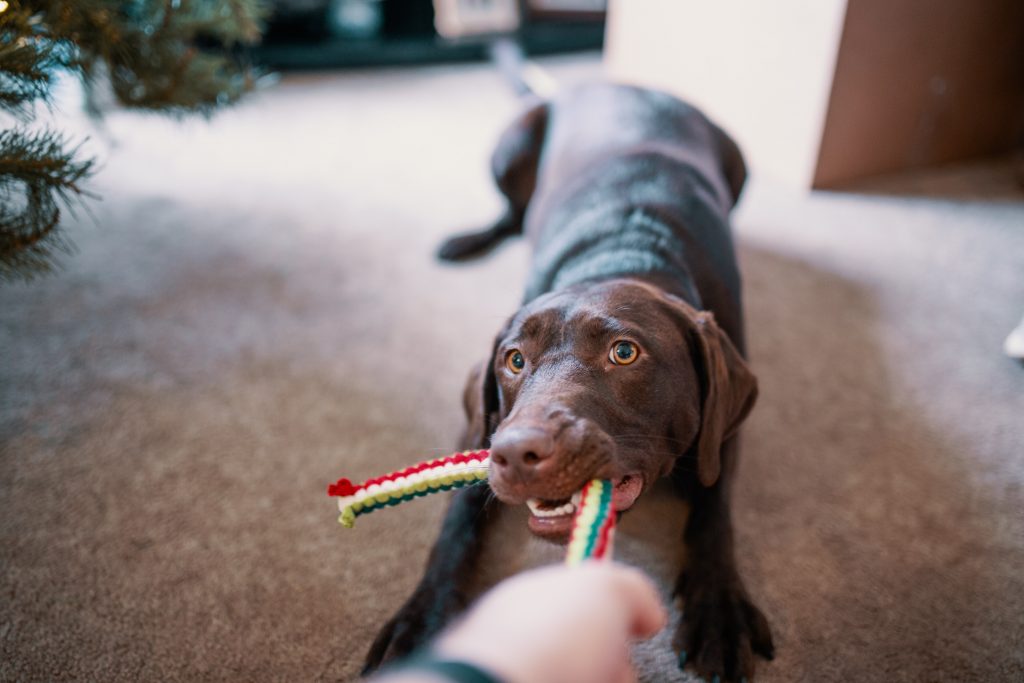Hip Dysplasia is a common complaint in dogs, and usually occurs when the joint has not developed perfectly, so the ball and socket do not match up in joints.
It is often associated with large breeds of dogs and typically starts to become noticed when they are only a few months old. The ligaments and joint capsule that normally stabilise the hip joint become loose within the first few weeks of life and therefore the ball and socket hip joint that normally aligns with each other lacks alignment and harmonious fit. Any non-alignment will result in abnormal wear, and can lead to osteoarthritis.
This condition is primarily of genetic cause, although environmental factors such as obesity during puppyhood may influence whether an animal with the genes coding for hip dysplasia will develop a clinical problem. Current estimates show that there are more than one hundred genes code for hip dysplasia.
Hip dysplasia is the most common orthopaedic condition in dogs
The clinical signs are very variable and include stiffness, exercise intolerance, difficulty getting up or lying down, problems climbing stairs, and gait abnormalities, including limping on one or both back legs. It is rare for dogs to demonstrate overt signs of pain at home, although clinically affected dogs are often very painful when their hips are extended by a veterinary surgeon.
All dogs whether they have surgery or not, should go through a comprehensive physiotherapy program including laser, hydrotherapy, exercise and dietary advice.
Conservative Management of Hip Dysplasia
Following a full assessment with our physiotherapist our rehabilitation programmes will seek to address any alterations in gait pattern and lameness, improve load bearing on the affected limb, target improvements muscle weaknesses, reduce any pain, improve posture and range of movement.
Surgical Management of Hip Dysplasia
Should your dog require surgery to address hip dysplasia, rehabilitation should be implemented post-operatively. Initially rehabilitative therapist will be used to reduce swelling and pain, whilst maintaining flexibility and muscle mass. As your dog progresses exercises to enhance movement, balance, coordination and strength will be developed.

Rehabilitation options for Hip Dysplasia
Land-based Therapy
Physiotherapy can help to alleviate the symptoms of hip dysplasia and enhance your dogs general well being. Physiotherapeutic therapies aim to help reduce pain and swelling, maintain and/or increase joint mobility, and maintain and/or increase muscle mass. Treatment modalities include manual therapies, electrotherapy’s and land-based exercises for strengthening.
Water-based Therapy
Hydrotherapy is a perfect environment for a dog with hip dysplasia. The warm, supportive medium provides pain relief and allows mobilisation of joints in a buoyant / semi-buoyant environment, maintenance and strengthening of specific muscle groups and enhancement of general cardiovascular fitness which on land might not be so easy.
Home-based Programmes
A specific home care exercise programme and walking advice will be given to you by your physiotherapist and it will be uniquely designed to suit your dog’s needs. Your physiotherapist will also be able to offer advice on daily living activities such as how best to assist your dog in and out of a car, avoidance of slippery floors, and avoidance of high impact activity such as jumping up or down from furniture, running up and down stairs.
| Time Frame | Rehabilitation Aims |
| 0-2 Weeks | Reduce post-operative swelling Reduce muscular guarding Maintain soft tissue flexibility Allow careful limb loading |
| 2-4 Weeks | Progress limb loading Re-educate gait Increase muscle mass Maintain soft tissue length Maintain tissue flexibility Management at home |
| 4-6 Weeks | Progress limb loading Re-educate gait Increase muscle mass Maintain soft tissue length Maintain tissue flexibility Management at home Improve core stability |
| 6-12 Weeks | Increase exercise tolerance Increase core stability |
| 12+ Weeks | Return to full function Advise long term management |








